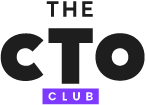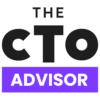Fifteen years ago, record labels scrambled to manage a massive leap from physical albums to digital downloads. Not long after, streaming services exploded onto the scene, forcing yet another transformation.
I spoke with Adam D’Angelo, Director at Slalom, and he pointed out that the music industry’s repeated format shifts—vinyl to cassette, cassette to CD, CD to MP3—embody a familiar dilemma: Big-bang transformations quickly become painful and often obsolete before they even finish.
D’Angelo warns SaaS leaders against similar “end-state” thinking. Instead of saving change for a dramatic, once-in-a-decade event, organizations that thrive embrace a culture of continuous evolution. It’s more effective—and far less disruptive—to make small, iterative improvements, whether you’re modernizing your cloud infrastructure or rolling out AI-driven features.
In the same way that streaming supplanted MP3s, your tech stack will keep evolving, so it’s best to build change management practices that can flex as rapidly as the market demands.
How Hypergrowth Plays a Part
Hypergrowth feels exhilarating … and chaotic. Teams may double or triple in size, processes strain under the pressure, and even the strongest cultures start to fray.
One thing becomes clear amidst this rapid expansion, and it’s that without a structured approach to change management, even the best SaaS products risk being derailed by operational dysfunction or misalignment.
D’Angelo emphasized that “Technology and markets evolve daily, so leaders must adopt ‘continuous evolution’ rather than a singular ‘digital transformation.’” He underscores that “if you’re not continuously optimizing, you’ll lose your competitive edge.”
This notion of digital continuity reframes old thinking about “all-at-once” transformations.
Developing a culture of digital continuity doesn't happen overnight, but there are a few things to focus on to set you and your team on the right track.
In fact, here's something you can do right now to get started:
1. Schedule a 30-minute meeting with your leadership or product teams.
2. Identify one critical bottleneck—maybe a recurring blocker in engineering—and outline a quick plan to improve it.
This small first step fuels the culture of continuous evolution.
Core Pillars of Change Management
With hypergrowth, you’ll face a particular set of challenges: skyrocketing headcounts, shifting processes, and ever-rising expectations.
The following four pillars lay the groundwork for leaders to guide their teams through rapid change without losing sight of what truly matters.
- Communication
- Targeted over-communication: In D’Angelo’s words, it’s not just about broadcasting updates; it’s about ensuring the right people get the right information at the right time. Weekly “What’s New, What’s Next” bulletins or dedicated Slack channels can help.
- Listening as a leadership skill: Adam cites the “two ears, one mouth” principle, reminding leaders to listen more than they speak. By collecting genuine feedback, you can pinpoint early warning signs and adapt quickly.
- Culture of Continuous Learning
- Start with a passionate champion: According to D’Angelo, learning and development (L&D) sticks when someone truly believes in it. Initiatives like “tech talk” lunches or short weekly training bursts keep skill-building front and center.
- Recognition & rewards: Celebrate employees who complete certifications or share fresh insights. Public acknowledgment motivates others to follow suit.
- Calm Under Pressure
- Firefighter mindset: Hypergrowth can feel like one blaze after another. D’Angelo describes his role as “firefighting”—staying calm amid chaos so teams remain focused and unafraid.
- Practical tactics: Short daily stand-ups, clear “war room” protocols for major incidents, and transparent communication reassure teams and keep them on track.
- Outcome-Focused Approach
- Start with the business goal: Whether you’re aiming for market expansion or a faster release cycle, lead with the outcome. D’Angelo insists on understanding the “why” before pushing any particular tech tool or platform.
Take Action: Pick one pillar—say, Communication—and commit to a five-minute daily update for your direct team. Summarize top priorities, progress, and blockers. Over time, consistent communication establishes trust and clarity.
Build a Change-Ready Organization
A truly “change-ready” SaaS organization embraces the notion that technology, talent, and market demands will constantly shift. No team or process remains static for long. Success hinges on rapid, iterative adaptations rather than one-and-done overhauls.
Move beyond traditional and often flawed “rollout” methods and establish a framework for continuous improvement.
Why Traditional “Rollouts” Fail
Too many organizations rely on top-down, “big bang” changes that assume a stable environment from planning to execution. In hypergrowth, this stability never materializes—teams expand, priorities shift, and the technology landscape evolves too quickly.
In a conversation with Tariq Afeef, a SaaS deployment specialist, he explained how end-user adoption, training, and a single “super user” are vital for any rollout’s success. He’s seen entire organizations struggle to pivot from one platform or process to another, emphasizing that change management is “...ginormous. It’s about bringing everyone along for the ride.” Afeef cautions against adopting new platforms purely because of the latest buzz.
Other issues include rigid assumptions, i.e., a massive rollout plan often leaves little room for real-time feedback or course correction, and delayed value: Lengthy lead times mean teams wait months (or even years) to see the benefits—if they see them at all.
Agile, Incremental Approaches
Rather than betting everything on one massive initiative, borrowing from DevOps and Agile principles can help you pivot swiftly when conditions change. Focus on short sprints, small wins, and continuous feedback.
- Pilot, Validate, Scale: Launch a new feature with a single squad or team. Gather metrics, make adjustments, and then roll it out to a wider group.
- Iterative Improvements: Breaking big projects into incremental deliverables lets you evaluate success in real time and maintain momentum.
Empower Team Leads
An organization’s agility is only as strong as its local decision-makers. During our conversation, D’Angelo highlighted the power of “passionate leaders,” who can ignite continuous learning and drive positive change from within their micro-teams. They share a couple things in common:
- Decentralized ownership: Provide managers with the autonomy to adjust processes based on on-the-ground realities while staying aligned with overarching goals.
- Shared metrics: Unite teams under common KPIs or OKRs. When everyone measures success in the same way, incremental changes stay coherent and purposeful.
Foster Digital Continuity
When you’re in a fast-paced SaaS environment, it’s rarely beneficial to overhaul your entire tech stack in one go. Instead of planning “all-hands” re-platforming every few years, create a rhythm of steady, incremental tech upgrades, for example:
- Regular reviews: Evaluate your systems—cloud infrastructure, monitoring tools, documentation—on a rolling basis to see where performance or cost can be optimized.
- Small “Upgrade Sprints”: Tackle necessary improvements one project at a time, ensuring you’re continually modernizing without disrupting day-to-day operations.
If you can get away from monolithic rollouts and adopt incremental, feedback-driven improvements, you will build a culture that is ready (and willing) for whatever tomorrow brings. Be it a sudden market pivot or a game-changing AI tool, a change-ready organization understands digital continuity and can embrace learning and decentralize leadership every step of the way.
Take Action: Identify a single initiative—perhaps outdated deployment scripts or a neglected onboarding flow—that’s clearly overdue for modernization. Design a mini-sprint. Set a two-week window, define the tasks, assign clear owners, and establish success metrics (e.g., “Reduce deployment time by 20%”). Then, iterate and share. Once the sprint ends, gather feedback and share results across the organization. Transparency accelerates buy-in for future changes.
Overcome Roadblocks
“What doesn’t kill you makes you stronger,” said Friedrich Nietzsche or Kelly Clarkson, depending on which decade you’re in. But yes, even the strongest change initiatives face hurdles, especially in hypergrowth.
Legacy teams may be wary of new processes, executives might struggle to see immediate ROI, and mergers or acquisitions can spark cultural clashes. The key is recognizing these obstacles early and having a clear plan to address them before they derail momentum.
A few practical strategies for some of the most common challenges include the following:
- Legacy resistance: Involve veteran teams early. Showcase how the change reduces operational headaches.
- Executive misalignment: Provide a concise brief connecting the change to revenue, churn reduction, or a key strategic aim.
- M&A culture clash: Assign “Integration Leads” to quickly unify processes, align OKRs, and foster regular cross-team syncs.
Take Action: Reach out to your toughest skeptic—whether that’s an executive or a legacy team lead—and schedule a 1:1 conversation to co-create a path forward.
What’s Next?
To thrive in hypergrowth, SaaS leaders must manage change with intention and agility. Continuously evolve your culture, tooling, and processes—and as D’Angelo’s music industry analogy demonstrates—you can avoid the pitfalls of massive, disruptive overhauls.
Over-communicate priorities, nurture a learning culture, remain unflappable during crises, and always tie technology decisions back to business outcomes. Above all, keep refining your approach in small, manageable sprints—true “digital continuity” means never sitting still.
Try at least one “take action” step from this article and share your experience with me! I’m curious to know what worked (or what didn’t) for your team! And please call out any other tips I didn’t cover.
Subscribe to the CTO Club’s newsletter for more insights.




